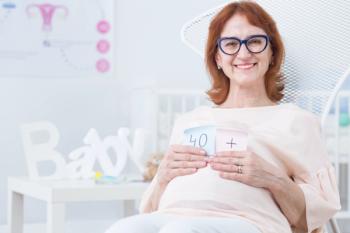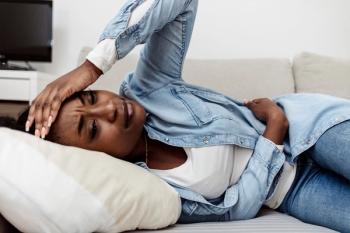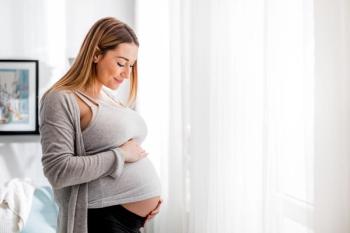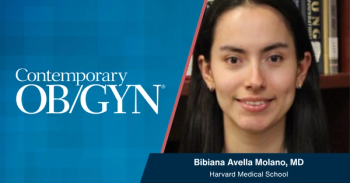
Live birth in world’s first in utero stem cell transplant trial
The first birth from a groundbreaking trial of in utero stem cell transplantation suggests that fetal therapy may be a viable new option for alpha thalassemia (ATM). Plus: Why do vasomotor symptoms bother some women long after menopause? Also: Does CPAP improve sexual QOL in women with sleep apnea?
The first birth from a groundbreaking trial of in utero stem cell transplantation suggests that fetal therapy may be a viable new option for alpha thalassemia (ATM). Some 5% of the world’s population carries the gene for ATM, which is almost universally fatal in utero because of a lack of effective therapies.
The delivery at 37 weeks’ gestation, which occurred in February at UCSF, was recently
Prior to the transplant, intrauterine transfusions (IUT) were performed to treat the fetus’s hydrops. For the transplant, the mother’s bone marrow was harvested, hematopoietic stem cells (HSC) were extracted, and they were administered to the fetus as part of a transfusion. HSC transplantation into the fetus takes advantage of the developing fetal immune system to induce tolerance to the transplanted cells without using conditioning or immunosuppression. Performing SCT at the same time as IUT minimizes any additional procedural risk to the fetus.
The infant has been discharged from the hospital and investigators said she will require further blood transfusions or another SCT to remain healthy. The trial is the first of in utero SCT and besides demonstrating the technique’s safety and feasibility, the researchers also want to demonstrate postnatal chimerism of maternal cells so that, if an infant requires bone marrow transplant after delivery, no conditioning or immune suppression will be needed. Why do vasomotor symptoms bother some women long after menopause?
Results of a survey-based study show that vasomotor symptoms (VMS) can be troublesome to women more than a decade after they enter menopause. The findings, published in
The analysis, by investigators from Mayo Clinic, involved collection of data from women who presented to the facility in Rochester, Minnesota, for a menopause consultation between January 1, 2006 and October 7, 2014. The participants completed the Menopause Health Questionnaire from the Data Registry on Experiences of Aging, Menopause, and Sexuality (DREAMS), which was created at the clinic as a tool to improve health care.
During the study period, 4,956 women had a consultation for menopause, 921 (18%) of whom were age 60 or older. Of that subgroup, 379 (41.2%) reported moderate-to-severe vasomotor symptoms (msVMS). The msVMS classification indicated that the women had reported on the survey that they were bothered “quite a bit” or “extremely” by their symptoms rather than “not at all” or “a little bit.”
The researchers evaluated women with and without msVMS by menopause type; self-rated health; current use of tobacco, caffeine and alcohol; and use of pertinent medication. Logistic regression and a multivariable model with age as a covariate were used to evaluate associations between participant characteristics and msVMS. Interactions between participant characteristics and age also were assessed.
The authors found that women aged 60 or older with msVMS were more likely to have had a nonspontaneous menopause and to report their health as fair rather than good or excellent. Women who reported currently using hormone therapy were less likely to report msVMS than those who did not use the drugs P < 0.001).Does CPAP improve sexual QOL in women with sleep apnea?
Long-term sexual quality of life (QOL) may be improved in women with obstructive sleep apnea (OSA) who are using continuous positive airway pressure (CPAP) for at least 4 hours a night, according to a follow-up study in
This study included 182 adult patients with newly diagnosed OSA who were prescribed CPAP. Of the 182 participants, 115 (63.2%) were men (mean [SD] age, 47.2 [12.3] years) and 137 (75.3%) were white. The participants were obese (mean [SD] body mass index [BMI], 31.9 [6.7]) and had severe OSA (mean [SD] apnea-hypopnea index, 32.5 [23.8] events per hour). The cohort also had QOL comorbidities (mean [SD] Functional Comorbidity Index, 2.2 [1.7]). Of the participant group, there were 72 CPAP users (mean [SD], 6.4 [1.2] hours per night) and 110 nonusers.
The researchers used the Symptoms of Nocturnal Obstruction and Related Events-25 (SNORE-25), a five-point Likert scale, to assess QOL change in OSA. They also created a sexual QOL domain from the 2 sex-specific items in the questionnaire (“Because of medical problem, unable to have sexual relations” and “Lack of desire for sexual relations”). Using the mean for the responses to those 2 questions, they created a sexual QOL score ranging from 0 to 5 (a higher score is worse). Both the CPAP users and nonusers had a clinically important baseline deficit in sexual QOL. But at 12 months, CPAP users experienced a mean improvement in QOL (mean [SD] change, 0.7 [1.2]; 95% CI, 0.4-1.0; ES (mean change score divided by the baseline SD), 0.60). Nonusers had no significant change in sexual QOL at 12 months (mean [SD] change, 0.1 [1.1]; 95% CI, -0.1 to 0.4; ES, 0.11).
In unadjusted analysis, CPAP users had greater improvement than nonusers with a moderate ES (unadjusted difference, 0.54; 95% CI, 0.18-0.90; ES, 0.47). The association remained after adjusting for age, sex, race, marital status, income and education levels, BMI, apnea-hypopnea index, and the Functional Comorbidity Index. Adjusted and unadjusted subgroup analysis in women showed that CPAP users had a greater improvement in sexual QOL at 12 months than nonusers (unadjusted difference, 1.24; 95% CI, 0.51-1.96; ES, 0.80; adjusted difference, 1.34; 95% CI, 0.50-2.18; ES, 0.87). However, adjusted and unadjusted analysis in men revealed no significant difference in sexual QOL between CPAP users and nonusers (unadjusted difference, 0.14; 95% CI, -0.23 to 0.51; ES, 0.17; adjusted difference, 0.16; 95% CI, -0.26 to 0.58; ES, 0.19). In fully adjusted analyses, the addition of marital status alone to the initial model slightly weakened the association (adjusted difference, 0.31; 95% CI, -0.09 to 0.71). The addition of income level alone strengthened the association (adjusted difference, 0.55; 95% CI, 0.15-0.94) but the addition of education slightly weakened the association (adjusted difference, 0.35; 95% CI, -0.03 to 0.74).
The researchers believe the study supported their hypothesis that long-term CPAP use improves sexual QOL in a cohort of patients with OSA. However, they were surprised to find that subgroup analysis showed that men had no treatment outcome, while women had a pronounced treatment outcome in sexual QOL. This result differs from previous studies that returned a more pronounced outcome in men. They also note a few strengths and limitations to this study. Among the mentioned strengths were the measurement of CPAP use, a broad sample of patients with OSA, a validated QOL instrument and inclusion of a general population with OSA. Among the mentioned limitations were not using a validated instrument for measuring sexual QOL and the scope of the QOL assessment. The researchers believe that future research should include a larger multicenter trial that compares CPAP with less cumbersome treatments and using a validated sexual QOL instrument.
Newsletter
Get the latest clinical updates, case studies, and expert commentary in obstetric and gynecologic care. Sign up now to stay informed.




















